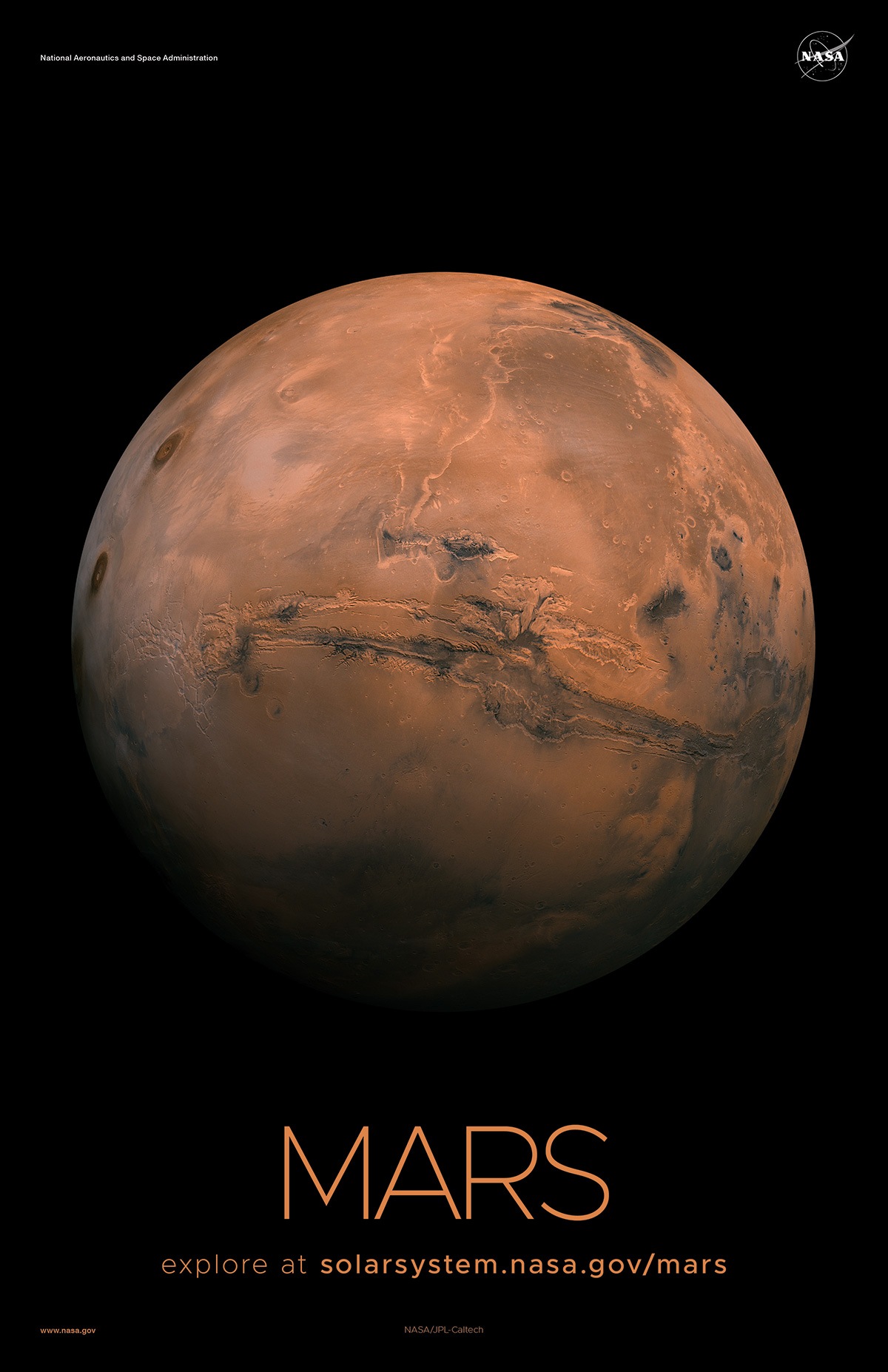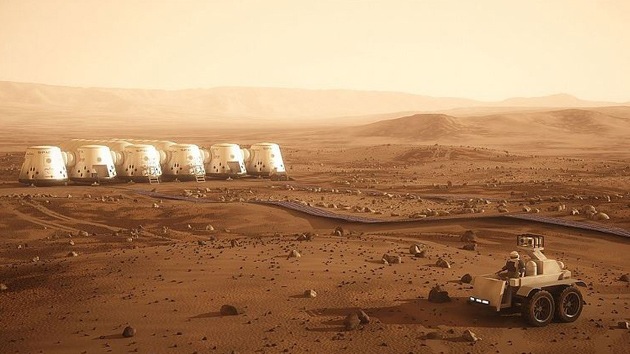Mars: The red planet
MARS: The red Planet
Information about me:
I'm a 15 years old boy. I like to learn about astronomy and technology. I enjoy learning new things. I fascinated with universe and their mysteries.About the blog:
This blog will be about Mars characteristics, information, facts and Mars colonization.
Mars:
Characteristic:
Mars
is the fourth planet from the Sun and last of the terrestrial planets. Like the rest of the
planets in the
solar system (except Earth), Mars is named after a
mythological figure - the Roman god of war. In addition to its official name,
Mars is sometimes called the Red Planet because of the brownish-red
color of its surface. Mars is the second smallest planet in the solar system
behind Mercury.
Facts:
·
Mars is the
fourth planet from the Sun and
last of the terrestrial planets and is around 227,940,000 km from the Sun.


·
The planet is
named after Mars, the Roman god of war. It was known to the ancient Greeks as Ares, their god of war. This
is thought to be because of the blood-red color of the planet which was also
used by other ancient cultures. Chinese astronomers call Mars the “fire star”
while ancient Egyptian priests called it “Her Desher” meaning “the red one”.


·
The landmass
of Mars and Earth is very similar. Despite
Mars being just 15% the volume and 10% the mass of Earth, it actually has a
similar landmass because water covers about 70% of Earth’s surface. The surface
gravity of Mars is about 37% the gravity found on Earth. This means that on
Mars you could in theory jump 3x higher than you could on Earth.yy


·
Only 16 of
the 39 Mars missions have been successful. Beginning with the USSR’s Marsnik 1 which was launched in 1960, 39
orbiters, landers and rovers have been to Mars but only 16 of those missions
were a success. In 2016, Europe’s Exobiology on Mars program will search the
planet for signs of Martian life as well as study the surface and terrain of
the planet and map potential environmental hazards to future manned missions to
Mars.


·
Pieces of
Mars have been found on Earth. It is
believed that trace amounts of the Martian atmosphere were within meteorites
that the planet ejected. These meteorites then orbited the solar system for
millions of years amongst the other objects and solar debris before eventually
entering the Earth’s atmosphere and crashing to the ground. The study of this
material has allowed scientists to discover more about Mars before launching
space missions.

·
The tallest
mountain known in the solar system is on Mars. Olympus Mons is a 21 km high and 600 km diameter shield volcano
that was formed billions of years ago. Scientists have found a lot of recent
evidence of volcanic lava which suggests Olympus Mons may still be active. It
is the second highest mountain in the entire solar system, topped only by the
Rheasilvia central peak on the asteroid Vesta, which is 22 km high.


Extra information:
It was believed life
existed on Mars for much of the nineteenth century. The reason behind this
belief was part mistake and part imagination. In 1877, the astronomer Giovanni Schiaparelliobserved what he believed to be straight lines on
Mars’ surface. As others noticed these lines, some suggested that they were too
straight and could only be the work of intelligent life. The popular conclusion
as to the nature of these lines was that they were canals constructed for
irrigation purposes. However, with the development of more powerful telescopes in the early twentieth century,
astronomers were able to view the Martian surface more clearly and determine
that these straight lines were merely an optical illusion. As a result, the
earlier claims of life on Mars were without evidence and, therefore,
discarded.
The large amount of science
fiction written during the twentieth century was a direct outgrowth of the
belief that Mars possessed life. From little green men to death rays, Martians
were the focus of many television and radio programs, comic books, movies, and
novels.
Although the discovery of
Martian life in the eighteenth century eventually proved to be false, Mars is
nonetheless the planet most hospitable for life other than the Earth. As such,
recent planetary missions have tried to determine if even the most basic of
life exists on the planet’s surface. The Viking mission in the
1970s conducted experiments on the Martian soil in hopes of detecting
microorganisms. While it was initially believed that the formation of compounds
during the experiments were a result of biological agents, it has since been
determined that these compounds can be created without biological mechanisms.
Even though the results
lean toward the absence of life on Mars, scientists have speculated that
conditions are right for life to exist beneath the planet’s surface. Future
planetary missions scheduled to test the possibility of past and present life
include the Mars Science Laboratoryand ExoMars missions.


MARS COLONIZATION
Mars is the focus of much
scientific study about possible human colonization. The surface conditions of
Mars and past presence of water
icemake it arguably a feasible
endeavor.
Permanent human habitation
on other planets, including
Mars, is
one of most prevalent themes in science fiction. As technology advances,
and concerns
about humanity's future on Earth increase, arguments favoring space colonization gain momentum. Other reasons for
colonizing space include economic interests, long-term scientific research best
carried out by humans as opposed to robotic probes, and sheer curiosity.
Both private and public
organizations have made commitments to researching the viability of long-term
colonization efforts and to taking steps toward a permanent human presence on
Mars. Space agencies engaged in research or mission planning include NASA, ESA, Roscosmos, Indian Space Research
Organisation and the China National Space
Administration, as well as private organizations such as SpaceX, Lockheed
Martin,
and Boeing.


https://en.wikipedia.org/wiki/Colonization_of_Mars
More information click here: https://www.youtube.com/watch?v=3iKrn_CNZpo
Going Wild
More information click here: https://www.youtube.com/watch?v=3iKrn_CNZpo

Your blog is interesting and informative because you explainned very well the content about Mars, it helped me to know and understand more about planets.
ResponderBorrarAWESOME! I KNOW MORE NOW!
ResponderBorrarVery amazing
ResponderBorrarOh my god this blog
Borrarthis issue is very good, now I know more about Mars
ResponderBorrarThis was very interesting because I had to know more about mars
ResponderBorrarVery amazing
ResponderBorrarYour blog is awesome
ResponderBorrarVery good this blog
ResponderBorrarCongratulations forma this blog
ResponderBorrar